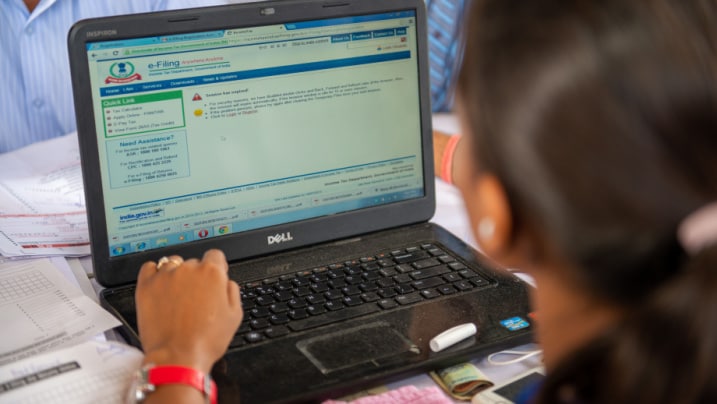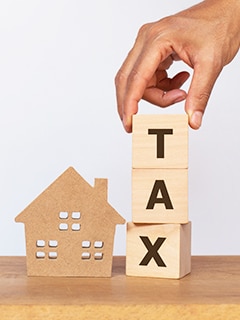CKYC Registry
-
Customer Service Contact us Service request Locate a branch
Find all the help you need
Scan the QR, get our app, and find help on your fingertips

Help CenterSupport topics, Contact us, FAQs and more
-
Login
Are you ready for an upgrade?
Login to the new experience with best features and services
-
Login
Are you ready for an upgrade?
Login to the new experience with best features and services
- Accounts
-
Deposits
IDFC FIRST Bank Deposits
View all Deposits -
Loans
IDFC FIRST Bank Loans
View all Loans - Wealth & Insure
-
Payments
IDFC FIRST Bank Payments
View all Payments -
Cards
IDFC FIRST Bank Cards
View all Cards - Blogs
- Corporate Account
-
Cash Management Services
IDFC FIRST Bank Cash Management Services
View all Cash Management Services - Supply Chain Finance
-
Corporate Lending
IDFC FIRST Bank Lending
View all -
Treasury
IDFC FIRST Bank Treasury
See more details - NBFC Financing
Support topics, Contact us, FAQs and more
- IDFC FIRST Bank Accounts
-
Savings Account
-
Corporate Salary
Account -
Senior Citizens
Savings Account -
First Power
Account -
Current Account
-
NRI Savings
Account -
TASC Institutional
Account -
Savings Account
Interest Calculator
- IDFC FIRST Bank Deposits
-
Fixed Deposit
-
Recurring Deposit
-
NRI Fixed Deposit
-
Safe Deposit Locker
-
FD Calculator
-
RD Calculator
- IDFC FIRST Bank Loans
-
Personal Loan
-
Consumer Durable
Loan -
Home Loan
-
Business Loan
-
Professional Loan
-
Education Loan
-
New Car Loan
-
Pre-owned Car Loan
-
Two Wheeler Loan
-
Pre-owned Two
Wheeler Loan -
Commercial Vehicle
Loan -
Gold Loan
-
Loan Against Property
-
Loan Against Securities
-
Easy Buy EMI card
-
Personal Loan
EMI Calculator -
Education Loan
EMI Calculator -
Home Loan
EMI Calculator
- IDFC FIRST Bank Wealth & Insure
-
FIRST Select
-
FIRST Wealth
-
FIRST Private
-
Mutual Funds
-
Sovereign Gold Bond
-
Demat Account
-
Term Insurance
-
Life Insurance
-
Health Insurance
-
General Insurance
-
Bonds
-
Loan Against
Securities -
Portfolio Management
Service
- IDFC FIRST Bank Payments
-
FASTag
-
Credit Card
Bill Payments -
UPI
-
Funds Transfer
-
Forex Services
-
Pay Loan EMI
- IDFC FIRST Bank Cards
-
Ashva :
Metal Credit Card -
Mayura :
Metal Credit Card -
FIRST Millennia
Credit Card -
FIRST Classic
Credit Card -
FIRST Select
Credit Card -
FIRST Wealth
Credit Card -
FIRST WOW!
Credit Card -
Deals
-
Debit Cards
-
Co-branded Cards
-
Credit Card
EMI Calculator -
FIRST Corporate
Credit Card -
FIRST Purchase
Credit Card -
FIRST Business
Credit Card
- Premium Metal Credit Cards
-
AshvaLifestyle1% Forex₹2,999
-
MayuraLifestyleZero Forex₹5,999
-
FIRST PrivateInvite Only
- Best for travellers
-
MayuraZero ForexMetal₹5,999
-
Ashva1% ForexMetal₹2,999
-
FIRST WOW!Zero ForexTravelLifetime Free
-
FIRST SWYPTravel OffersEMI₹499
-
FIRST Select1.99% ForexLifestyleLifetime Free
-
FIRST Wealth1.5% ForexLifestyleLifetime Free
-
Club VistaraTravelLifestyle₹4,999
-
IndiGo IDFC FIRST Dual Credit CardTravelLifestyle₹4,999
- Max benefits, Free for life
-
FIRST Classic10X RewardsShoppingNever Expiring Rewards
-
FIRST Millennia10X RewardsShoppingNever Expiring Rewards
-
FIRST Select10X RewardsLifestyle1.99% Forex
-
FIRST Wealth10X RewardsLifestyle1.5% Forex
-
FIRST WOW!RewardsTravelZero Forex
-
LIC ClassicRewardsInsuranceShopping
-
LIC SelectRewardsInsuranceShopping
- Reward Multipliers
-
AshvaLifestyleMetal₹2,999
-
MayuraLifestyleZero Forex₹5,999
-
FIRST ClassicNever Expiring RewardsShoppingLifetime Free
-
FIRST MillenniaNever Expiring RewardsShoppingLifetime Free
-
FIRST SelectNever Expiring RewardsLifestyleLifetime Free
-
FIRST WealthNever Expiring RewardsLifestyleLifetime Free
- Rewards & Credit on UPI
-
FIRST Power+FuelUPI₹499
-
FIRST PowerFuelUPI₹199
-
FIRST EA₹NVirtual1% Cashback₹499
-
FIRST DigitalVirtualUPI₹199
-
IndiGo IDFC FIRST Dual Credit CardUPITravelDual cards
- Fuel and Savings
-
FIRST PowerRewardsUPI₹199
-
FIRST Power+RewardsUPI₹499
-
LIC ClassicRewardsInsuranceShopping
-
LIC SelectRewardsInsuranceShopping
- Express and Flaunt
-
AshvaMetal1% Forex₹2,999
-
MayuraMetalZero Forex₹5,999
-
FIRST SWYPEMIOfferMAX₹499
-
FIRST MillenniaRewardsShoppingLifetime Free
- FD Backed rewarding Credit Cards for all
-
FIRST EA₹NVirtualCashback₹499
-
FIRST WOW!Zero ForexTravelLifetime Free
-
CreditPro Balance TransferTransfer & SaveReduce InterestPay Smartly
- IDFC FIRST Bank NRI Forex Solutions
-
Send money to India-Wire transfer
-
Send money to India-Digitally
-
Send money abroad
-
Max Returns FD (INR)
- IDFC FIRST Bank MSME Accounts
-
Platinum Current
Account -
Gold
Current Account -
Silver Plus
Current Account -
Merchant Multiplier
Account -
Agri Multiplier
Account -
TASC Institutional
Account -
Dynamic Current
Account -
World business
Account -
First Startup
Current Account
- IDFC FIRST Bank Business Loans
-
Business Loan
-
Professional Loan
-
Loan Against Property
-
Business Loan for Women
-
Working Capital Loan
-
Construction Equipment Loan
-
Machinery Loan
-
Healthcare Equipment Loan
- IDFC FIRST Bank Business Solutions
-
Payment Solutions
-
Tax Payments
-
Doorstep Banking
-
Point of Sale (POS)
-
Escrow Accounts
-
NACH
-
Payment Gateway
-
UPI
-
Virtual Accounts
-
As per amendment in the Income Tax Rules, PAN or Aadhaar are to be mandatorily quoted for cash deposit or withdrawal aggregating to Rupees twenty lakhs or more in a FY. Please update your PAN or Aadhaar. Kindly reach out to the Bank’s contact center on 1800 10 888 or visit the nearest IDFC FIRST Bank branch for further queries.
-
-
Most Searched
Sorry!
We couldn’t find ‘’ in our website
Here is what you can do :
- Try checking the spelling and search
- Search from below suggestions instead
- Widen your search & try a more generic keyword
Suggested
Get a Credit Card
Enjoy Zero Charges on All Commonly Used Savings Account Services
Open Account Now
Finance
How does the new tax regime differ from the old tax regime?
Summary: The new tax regime differs from the old, not just in the number of tax slabs but also in tax exemptions. We examine the features of the new tax regime, and understand its differences compared to the old regime.
The 2020 Union Budget brought in a consequential change in the Indian taxation system – the new tax regime. The Government of India has provided taxpayers with the option of opting for the tax regime of their choosing. Also from AY 24-25 new regime will be default option to tax payer and they have to choose for the old tax regime. The old tax regime had four tax slabs, each catering to a different range of an individual’s income. However, this change in regime means more than just an increase in the number of tax slabs. Read on to know about the new tax regime and the ways in which it differs from the old tax regime.
What is the new tax regime?
We are all aware that Finance Minister Ms. Nirmala Sitharaman announced the new tax regime in the 2020 budget; thereby doing away with all the deductions and exemptions that a taxpayer could avail under the old tax regime and introducing more tax slabs. To understand the consequences of this regime for every taxpayer, we must first understand the definition of the term and its features. The new tax regime, introduced in the Budget 2020, provides taxpayers across the country with the option of paying income tax at lower rates under Section 115BAC of the Income Tax Act.
READ MORE
How do the tax slabs of the new tax regime differ from those of the old tax regime?
The finance minister announces the income tax slabs for the upcoming financial year in every Union Budget. Before the Budget 2020, the tax slabs of the old tax regime looked like this:
| Income Tax Slab | Income Tax Rate |
| Up to ₹ 2,50,000 | NIL |
| ₹ 2,50,001 - ₹ 5,00,000 | 5% above ₹ 2,50,000 |
| ₹ 5,00,001 - ₹ 10,00,000 | ₹ 12,500 + 20% above ₹ 5,00,000 |
| Above ₹ 10,00,000 | ₹ 1,12,500 + 30% above ₹ 10,00,000 |
Moving on, the new tax regime adds three more tax slabs to these tax slabs, taking the total number of tax slabs in the new tax regime to 7. Here are the tax slabs for AY 2022-2023:
| Income Tax Slab | Income Tax Rate |
| Up to ₹ 3,00,000 | NIL |
| ₹ 3,00,001 - ₹ 6,00,000 | 5% above ₹ 3,00,000 |
| ₹ 6,00,001 - ₹ 9,00,000 | ₹ 15,000 + 10% above ₹ 6,00,000 |
| ₹ 9,00,001 - ₹ 12,00,000 | ₹ 45,000 + 15% above ₹ 9,00,000 |
| ₹ 12,00,001 - ₹ 15,00,000 | ₹ 90,000 + 20% above ₹ 12,00,000 |
| Above ₹ 15,00,000 | ₹ 1,50,000 + 30% above ₹ 15,00,000 |
The table that you just saw, however, displays the new tax regime tax slabs for individuals (resident or non-resident) who are less than 60 years of age. Here is a comparison of the new tax regime tax slabs for individuals (resident or non-resident) who are more than 60 years of age, but less than 80 years of age.
| Old Tax Regime | New Tax Regime | ||
| Income Tax Slab | Income Tax Rate | Income Tax Slab | Income Tax Rate |
| Up to ₹ 3,00,000 | NIL | Up to ₹ 3,00,000 | NIL |
| ₹ 3,00,001 - ₹ 5,00,000 | 5% above ₹ 3,00,000 |
₹ 3,00,001 - ₹ 6,00,000 | 5% above ₹ 3,00,000 |
| ₹ 5,00,001 - ₹ 10,00,000 | ₹ 10,000 + 20% above ₹ 5,00,000 | ₹ 6,00,001 - ₹ 9,00,000 | ₹ 15,000 + 10% above ₹ 6,00,000 |
| Above ₹ 10,00,000 | ₹ 1,10,000 + 30% above ₹ 10,00,000 | ₹ 9,00,001 - ₹ 12,00,000 | ₹ 45,000 + 15% above ₹ 9,00,000 |
| ₹ 12,00,001 - ₹ 15,00,000 | ₹ 90,000 + 20% above ₹ 12,00,000 | ||
| Above ₹ 15,00,000 | ₹ 1,50,000 + 30% above ₹ 15,00,000 | ||
The new tax regime is applicable on income earned from 1st April 2020 (FY 2020-2021) which relates to AY 2021-2022.
What are the differences between the old and new tax regimes?
As mentioned earlier, the new tax regime’s implementations have farther-reaching effects and implications. Here are the deductions or exemptions for which you shall not be eligible under the new tax regime:
- Professional tax and entertainment allowance on salaries
- Leave Travel Allowance (LTA)
- House Rent Allowance (HRA)
- Minor child income allowance
- Helper allowance
- Children education allowance
- Other special allowances (Section 10(14))
- Interest on housing loan on the self-occupied property or vacant property
- Business deductions and business expenditures on specified businesses under the Income Tax Act.
- Tax-saving investments under Chapter VI-A deduction (80C, 80D, 80E, and so on)
- Deduction from family pension income
- Set off of loss or depreciation carried forward from earlier years in relation to the specified businesses.
The following allowances can be claimed under the new tax regime:
- Transport allowance for especially abled people.
- Conveyance allowance to meet the conveyance expenditure incurred as part of the employment.
- Deduction of Notified Pension Scheme under section 80CCD (2)
- Deduction for employment of new employees under section 80JJAA
- Depreciation under section 32 of the Income-Tax act except for additional depreciation.
- Any allowance granted to meet the cost of travel on tour or on transfer.
- Any allowance, whether granted on tour or for the period of journey in connection with transfer, to meet the ordinary daily charges incurred by an employee on account of absence from his normal place of duty.
- Any allowance granted to meet the expenditure incurred on conveyance in performance of duties of an office or employment of profit.
- Transport allowance granted to an employee who is blind or deaf and dumb or orthopedically handicapped with a disability of lower extremities, to meet their expenditure for the purpose of commuting the place of their residence and the place of their duty.
Your choice of tax regime would depend on various aspects related to your personal finances. Some of the considerations that you must make are – whether you have a housing loan, whether you contribute towards EPF (Employee Provident Fund), whether you receive HRA (House Rent Allowance) benefits, and so on.
Disclaimer
The contents of this article/infographic/picture/video are meant solely for information purposes. The contents are generic in nature and for informational purposes only. It is not a substitute for specific advice in your own circumstances. The information is subject to updation, completion, revision, verification and amendment and the same may change materially. The information is not intended for distribution or use by any person in any jurisdiction where such distribution or use would be contrary to law or regulation or would subject IDFC FIRST Bank or its affiliates to any licensing or registration requirements. IDFC FIRST Bank shall not be responsible for any direct/indirect loss or liability incurred by the reader for taking any financial decisions based on the contents and information mentioned. Please consult your financial advisor before making any financial decision.
The features, benefits and offers mentioned in the article are applicable as on the day of publication of this blog and is subject to change without notice. The contents herein are also subject to other product specific terms and conditions and any third party terms and conditions, as applicable. Please refer our website www.idfcfirstbank.com for latest updates.























